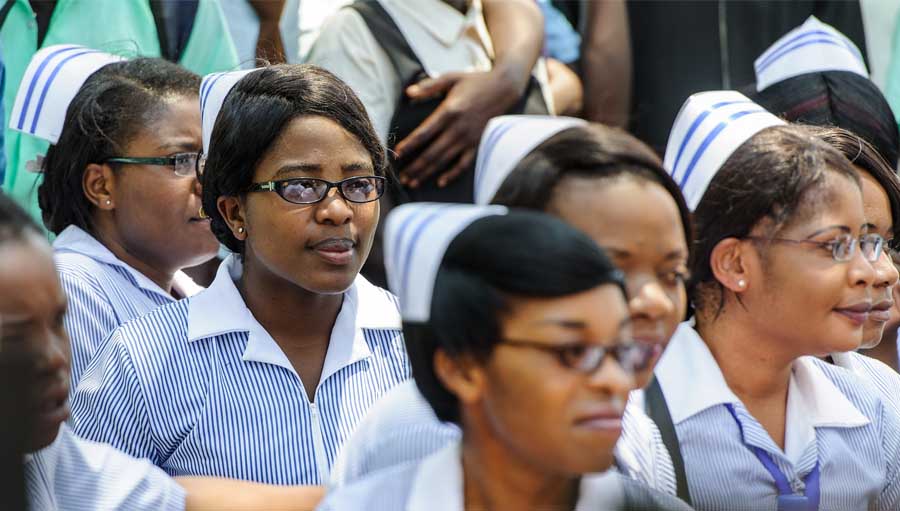Join a powerful, unprecedented alliance for better eye health for all.
Join IAPB-
Choose an alternate language here

With the number of ONs (and the Francophone ISOs) now in the region of 4,000 (with an additional estimated 2000+ TSOs and OCOs), and with 43 active training schools across the continent, with an estimated total training capacity of around 750 allied ophthalmic professionals (AOPs) per year, it is not hard to see the mismatch between needs, numbers and opportunities. Retention, given limited career development options, remains a real challenge as several countries explore degree level training and additional sub-specialty nursing.
IAPB Africa has tried to address these issues head-on through the development of WHO endorsed core competencies as a prelude to curriculum review and reform and, more recently, the establishment of a small consortium of countries (Ghana, Tanzania and Botswana) and member agencies (OEU, SSI and Addenbrookes Abroad) to take forward a 4 year project to strengthen ophthalmic nursing with the financial support of Seeing is Believing. IAPB has also developed a directory of ON training institutions and tries to maintain a country level data base as part of the work around the WHO-Afro Catalogue of Eye Health indicators and the IAPB Vision Atlas.
In Section 3.4 (below) we draw your attention to a new global campaign called Nursing Now, launched a few months ago, with the support of WHO, and based on the fact that Universal Health Coverage will not be achieved without developing nursing globally. What is equally true is that Universal Eye Health Coveragewill not be achieved without developing ophthalmic nursing and the training, deployment and retention of all other AOPs.
The global campaign is new and the eye health movement has much to gain by being part of it. As the feature below highlights, opportunities exist for countries and member agencies to make sure that ophthalmic nursing is not left behind as the campaign gathers momentum. Integration, at all levels, remains the name of the game.
Photo: Zambian nurses who see the real suffering caused by unnecessary visual impairment on a daily basis. By Helen White for Orbis Africa.